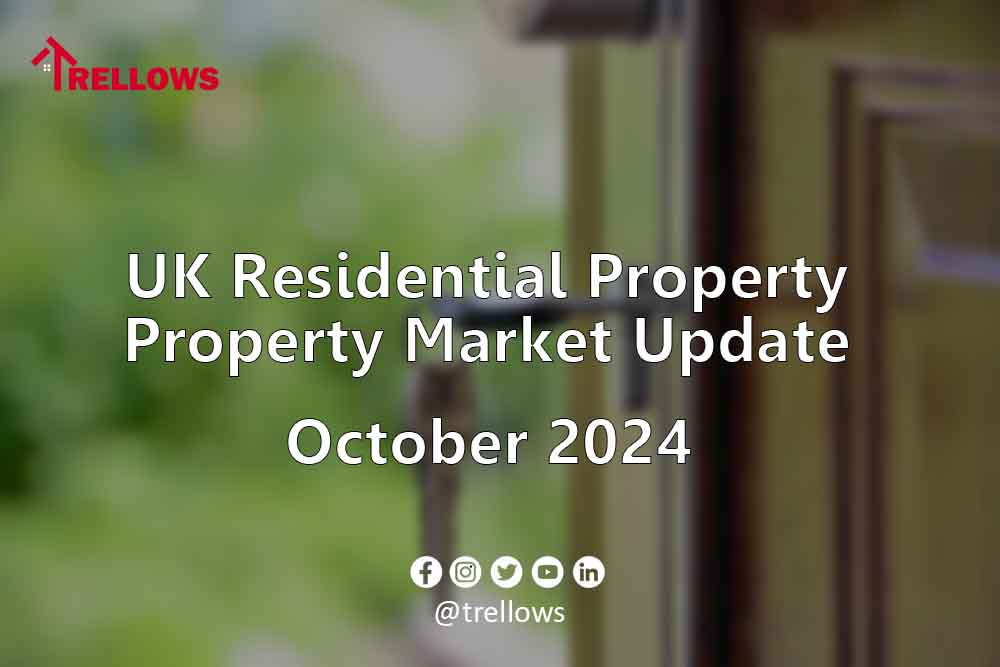UK Housing Market Analysis: October 2024
Executive Summary
The British property market has experienced a notable upturn, principally driven by the most favourable mortgage rates witnessed in 15 months. This renaissance in market activity has manifested in a 25% surge in property transactions compared to 2023, whilst maintaining measured price growth that reflects ongoing affordability constraints. The average UK house price now stands at £267,100 as of August 2024, marking a modest year-on-year increase of 0.7%.
Mortgage Market Developments
The lending landscape has undergone significant transformation, with the average five-year fixed-rate mortgage at 75% loan-to-value dropping to 4.3%, a marked improvement from 5.5% recorded the previous year. This represents the most attractive rates since May 2023, catalysed by fierce competition amongst lending institutions. The enhanced affordability has proved particularly beneficial for borrowers with substantial equity positions.
Regional Market Dynamics
### Strong Performance in Affordable Regions
– Northern regions and the Midlands continue to demonstrate resilience
– Price growth reaching 2.5% in more affordable localities
– The East Midlands and North East have witnessed transaction volumes exceeding 30% growth
### Southern England’s Mixed Picture
– The South West, South East, and East of England demonstrate negative year-on-year price growth
– London has executed a remarkable turnaround, transitioning from -1.7% depreciation to a modest 0.5% appreciation
– Northern Ireland leads the regional performance metrics with 5.5% growth, representing a significant catch-up phase following previous underperformance
## Supply-Side Analysis
### Chain-Free Properties
A noteworthy 32% of properties currently listed on Zoopla are being marketed as chain-free, with distinct patterns emerging across property types:
– Outside London: One and two-bedroom flats dominate the chain-free segment
– Within London: Two and three-bedroom houses represent the majority of chain-free offerings
### Investment Property Liquidation
The market has observed a significant influx of previously rented properties, constituting 13% of current listings. This trend is particularly pronounced in London and the South East, accounting for 53% of such properties, where:
– Modest rental yields
– Elevated mortgage costs
– Subdued capital appreciation
have collectively diminished investment returns.
## Coastal and Rural Market Dynamics
Several coastal and rural postcodes have experienced remarkable supply increases exceeding 40%, including:
– Truro
– Torquay
– Exeter
– Bournemouth
– Lincoln
– Norwich
This surge can be partially attributed to impending council tax modifications, with many English local authorities planning to double charges on second homes from 2025.
## Price Negotiation Trends
The market continues to favour pragmatic negotiation:
– 37% of successful transactions are concluded at values exceeding 5% below initial asking prices
– Sellers maintain aspirational pricing strategies whilst demonstrating increasing flexibility
– Buyers benefit from expanded choice and retain significant negotiating leverage
## Market Activity Indicators
### Buyer Demand
– 26% increase in prospective buyer enquiries compared to 2023
– Sustained improvement in transaction volumes across all regions
– Enhanced affordability metrics supporting maintained momentum
### Property Supply
– 12% increase in available properties compared to the previous year
– One-fifth of current listings represent properties previously marketed within the past 24 months
– Similar proportion of listings have undergone price adjustments exceeding 5%
## Future Market Outlook
### Short-term Projections
– Anticipated continuation of modest price appreciation
– Projected stability in transaction volumes
– Expected mortgage rates to stabilise between 3.75% and 4.25% into 2025
### Market Stabilisation Factors
– Rising household incomes improving affordability metrics
– Competitive mortgage market maintaining favourable lending conditions
– Balanced supply-demand dynamics supporting sustainable growth
### Risk Factors
– Global economic uncertainty potentially affecting interest rate trajectories
– Regional variations in market performance likely to persist
– Implementation of local authority tax changes affecting second home markets
## Recommendations for Market Participants
### For Sellers
– Maintain realistic price expectations
– Consider market position carefully when setting asking prices
– Prepare for longer marketing periods in certain segments
### For Buyers
– Capitalise on favourable mortgage rates whilst available
– Conduct thorough market research to identify value opportunities
– Maintain strong negotiating positions through proper preparation
## Concluding Observations
The British property market demonstrates encouraging signs of recovery whilst maintaining balanced growth dynamics. The combination of improved lending conditions, steady demand, and measured price appreciation suggests a sustainable trajectory for the remainder of 2024 and into 2025. However, success for both buyers and sellers will continue to depend upon realistic expectations and strategic approaches to market engagement.







